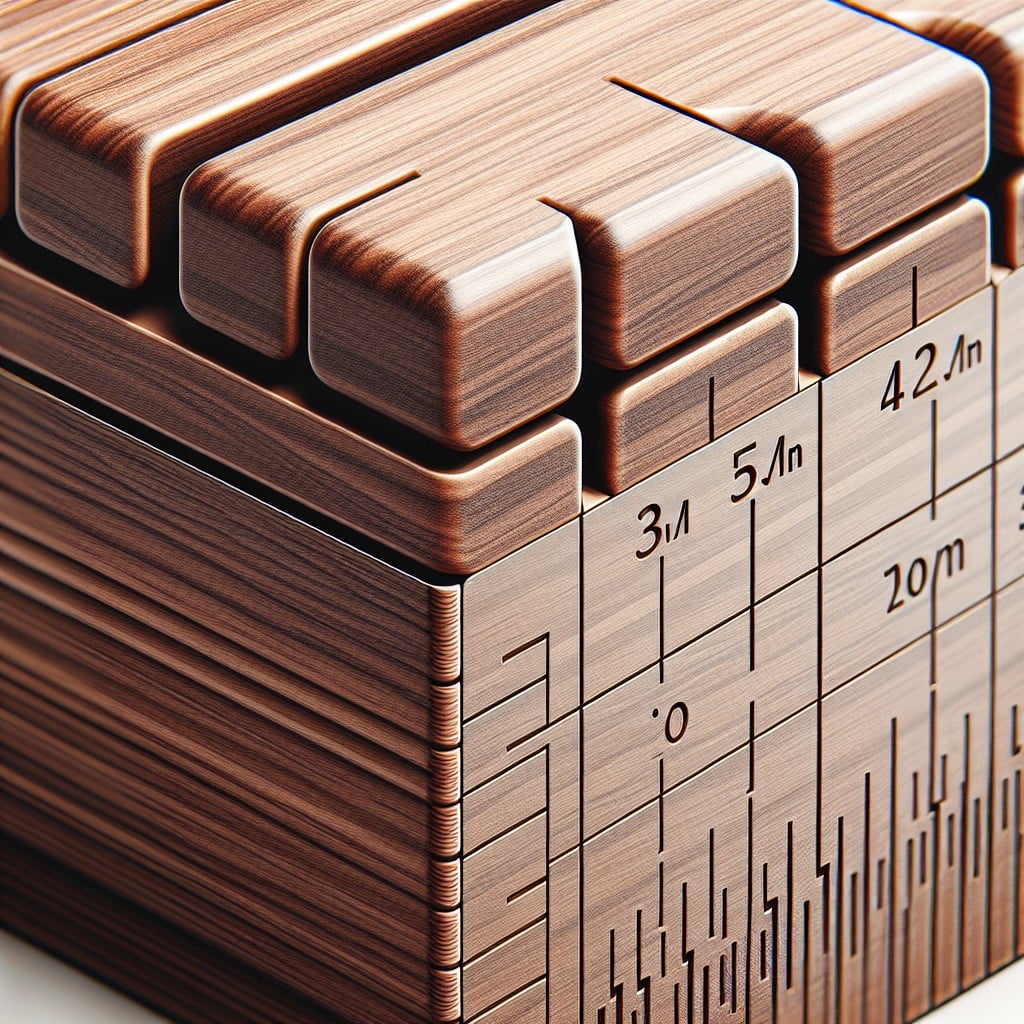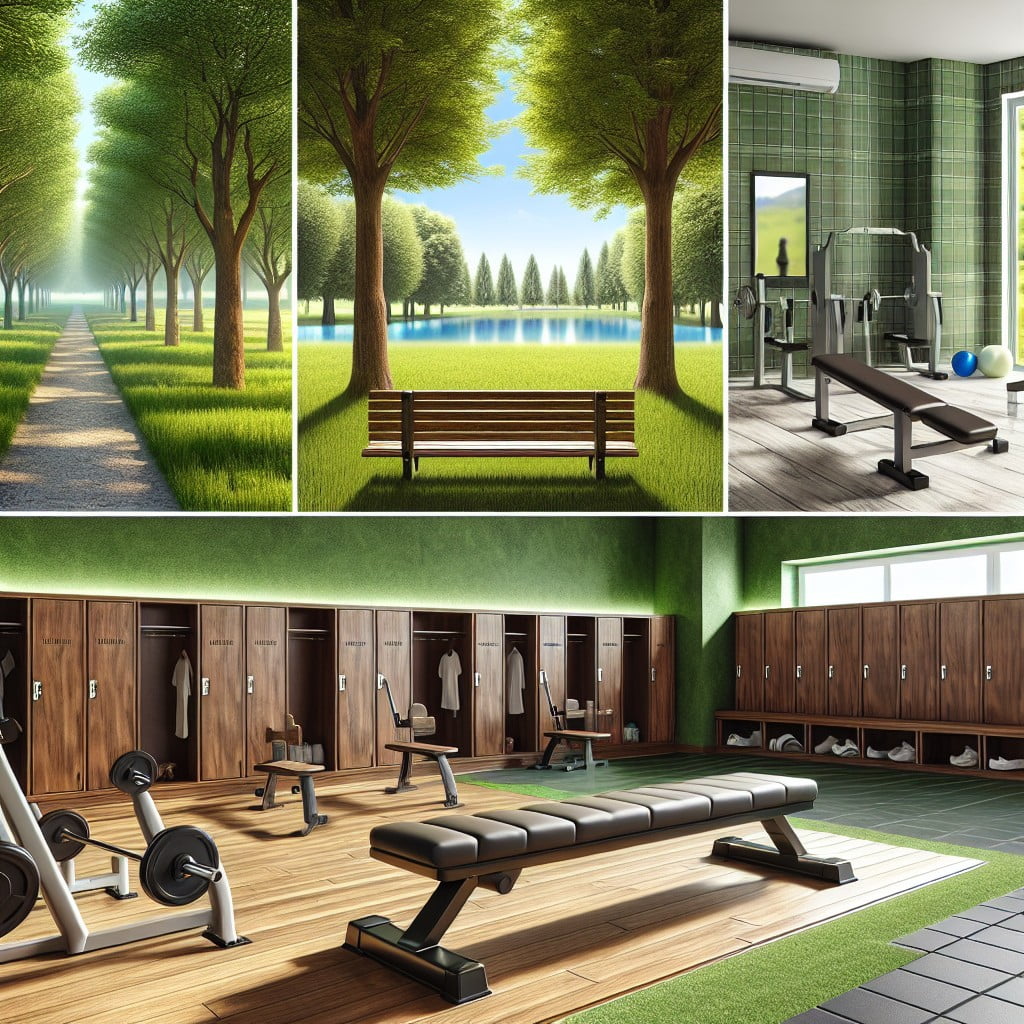Last updated on
Understanding the standard bench depth can transform your living or workspace, because it plays a crucial role in ensuring comfort and enhancing functionality.
The standard bench depth typically ranges from 15 to 20 inches.
Key takeaways:
- Ergonomics: Standard bench depth accommodates various body sizes for comfort.
- Usage: Bench depth varies based on intended use, from lounging to dining.
- Accessibility: Adequate depth allows for easier sitting and standing.
- Space Planning: Adjustments to standard depth may be needed based on available space.
- Outdoor vs. Indoor: Outdoor benches usually have deeper depths for a relaxed experience, while indoor benches are shallower for a more upright posture.
Definition of Standard Bench Depth

Standard bench depth refers to the distance from the front edge to the backrest, typically ranging from 15 to 20 inches. This measurement determines the seating area’s size, impacting how comfortably a person can sit.
- Ergonomics: Human anthropometry shapes this standard to accommodate various body sizes and ensure a comfortable seating experience without excessive strain on the legs or back.
- Usage: The intended purpose influences depth, with benches designed for lounging having deeper seats than those for brief rests.
- Accessibility: Adequate depth allows for easier sitting and standing, meeting accessibility needs for a broader range of users.
- Space Planning: The space available, especially in interior settings, may necessitate adjustments to the standard depth to balance comfort with floor space economy.
Optimal Bench Depth for Different Settings

The ideal depth of a bench often hinges on its intended use and location. When positioned in dining areas, a depth of about 14 to 18 inches is preferred for ease of sitting and standing. Meanwhile, lounges and waiting rooms that accommodate longer sitting periods benefit from deeper benches, typically around 20 inches, to provide additional support and comfort.
For garden or outdoor seating, where relaxation is key, and there’s often additional cushioning, depths can range from 18 to 20 inches. However, in a storage bench, utility is a priority, and depth may exceed 20 inches for ample space. Always consider the available space and functionality of the bench in each setting to identify the most practical depth.
Variations in Bench Depth Based On Bench Type
Bench types cater to specific needs, influencing their depth dimensions. Dining benches, for instance, are shallower, typically around 14-18 inches, to provide an upright posture during meals.
Garden benches feature deeper seats, around 18-24 inches, for a more relaxed sit-down amidst nature.
Storage benches, often found at the foot of a bed or in an entryway, have a deeper build to accommodate internal compartments, while piano benches are narrow, allowing for ease of movement during play.
Personal workbenches for crafting or woodworking usually have depths starting at 24 inches, providing ample workspace. Window seats, designed for lounging, can extend to 28 inches or more, creating a cozy nook.
Adjustable or folding benches come with varying depths to serve multipurpose functions yet collapse for convenient storage.
In each case, the intended use dictates the depth, ensuring functionality and comfort are balanced.
Bench Depth and Comfort: The Correlation
When it comes to bench comfort, depth plays a pivotal role. A bench that’s too shallow may not provide enough support for the thighs, leading to discomfort, while a bench that’s too deep can make it difficult to sit back fully, causing strain on the legs.
Typically, an ideal bench depth falls between 15 to 20 inches. This range caters to a wide array of body sizes and allows users to sit back completely, offering full support to the thighs and enabling a comfortable angle between the hips and knees.
Additionally, a proper depth ensures that the back is adequately supported by the bench’s backrest, if one is present. Cushions can also affect perceived depth; deep benches may need thicker cushions for enhanced comfort, while shallower benches can be complemented with slimmer padding.
Always consider the combined depth of the bench and any cushions to maintain optimal comfort levels.
Measuring Bench Depth
To accurately measure bench depth, you’ll need a straightedge like a ruler or tape measure. Start from the front edge of the bench seat, the place you’d usually sit against. Extend the straightedge back to the furthest point you can reach while still keeping the measuring tool level, which is typically where the seat meets the backrest.
If the bench has a cushion, measure from the front edge of the cushion to where it meets the back cushion. Avoid compressing any padding, as you want the maximum depth available for seating. It’s important to measure the usable space, considering any permanent fixtures or designs that might impact the true sitting area.
Documenting this measurement helps ensure that the selected or designed bench will complement the intended space and offer adequate comfort for users.
Standard Depth for Outdoor Benches
Outdoor benches, a staple in parks and gardens, offer a retreat where one can enjoy the beauty of nature. These benches boast a deeper seat to accommodate various postures and movements, allowing for a more relaxed, lounging experience. Typically, the depth ranges from 18 to 20 inches, providing sufficient support for the thighs without pressure at the back of the knees.
When contemplating an outdoor bench for your space, consider the intended use:
- Casual lounging and moments of repose favor a depth on the higher end of the scale, ensuring comfort even during extended periods of sitting.
- For dining or activity-focused setups—like a bench facing a playground or serving as seating around a fire pit—a slightly shallower depth may suffice. This range enables easier forward movement and interacting over a table or with others.
Materials factor into the experience as well. Wooden slats or contoured metal can make a deeper bench more inviting, while cushions can add comfort to a firm surface. Choosing the right depth enhances the functionality of your outdoor living space, creating an inviting area for relaxation and socialization.
Standard Depth for Indoor Benches
For indoor seating, the standard depth is generally about 15 to 18 inches, catering to the average person’s comfort. This range ensures that the majority of users can sit back against the support comfortably without their feet dangling.
When considering cushioned benches, it’s important to account for the compression of the cushion. A deeper bench might be needed if thick cushions are involved, ensuring that when compressed, they still provide ample support and maintain the effective seating depth.
Additionally, benches intended for dining use might be on the shallower end of the spectrum to facilitate an upright posture for mealtime. Keep in mind that allowances might be made for benches to be placed against a wall. This, in turn, could slightly reduce the necessary depth since a backrest doesn’t protrude.
Remember, ergonomics and the intended use play pivotal roles in the final determination of the appropriate bench depth for indoor spaces.
Ergonomic Considerations in Bench Depth
Ergonomics play a critical role in the design of a bench to ensure comfort and prevent strain. Here’s what to consider:
1. Seat Height and Depth Ratio: A seat depth that’s too shallow might not support the thighs fully, while a depth that’s too deep can put pressure on the back of the knees. An optimal depth allows feet to rest flat on the ground with thighs supported.
2. Backrest Angle and Support: The angle between the seat and backrest should support the natural curve of the lumbar spine. Typically, a slight backward tilt of 5 to 10 degrees is comfortable for most users.
3. Edge Contouring: A bench with a rounded or waterfall edge reduces pressure on the back of the legs, enhancing circulation.
4. Space for Movement: Adequate depth offers room to shift and change position, which is essential for longer seating periods to reduce the risk of stiffness.
5. Armrest Proportions: If the bench includes armrests, they should complement the seat by being at a height that doesn’t elevate the shoulders uncomfortably.
Matching these ergonomic principles with the intended use of the bench ensures a user-friendly seating experience.
Custom Bench Depth Options
While conformity to standard measurements is often preferred for consistency and cost-effectiveness, there are several reasons you might explore custom options. Perhaps you’re catering to a specific user group, matching an existing aesthetic, or working within unique spatial constraints.
1. User-Centric Customizations: Tailor bench depth to particular user needs. Shallow depths may suit children, while deeper benches can accommodate taller individuals comfortably.
2. Design-Driven Considerations: Some spaces call for furniture that complements its surroundings. A custom depth can ensure your bench fits perfectly with the style and proportions of a given environment.
3. Space Optimization: In smaller areas, a reduced depth can save space, while larger areas may allow for more generous sizing.
4. Accessibility Requirements: Custom bench depth can help meet specific accessibility standards, ensuring that seating is available and convenient for people with disabilities.
5. Multiple Uses: When a bench is intended for various activities, such as dining, lounging, or storage, the depth might be tailored to facilitate multi-functionality.
When opting for customization, work closely with a designer or manufacturer to ensure that the resulting product meets the intended needs without sacrificing comfort or style.
Tips for Selecting the Right Bench Depth
Consider the intended use of the bench. If it’s for dining, aim for a depth of 15 to 20 inches to fit under a standard table comfortably. For lounging, a deeper seat of around 24 inches will provide more support.
Measure the height of the table or surface the bench will be paired with, ensuring there is enough knee clearance.
Think about the users’ height. Taller individuals generally prefer deeper benches, while shallower depths may be better for shorter users.
Assess the space where the bench will go. In smaller areas, a bench with a depth of 15 inches can help conserve space without sacrificing seating.
Factor in cushions. If you plan to add cushions, consider how they will affect seating depth and comfort.
Test similar benches in stores or public places to gauge what depth feels comfortable for you.
If possible, choose adjustable-depth benches or those with movable backrests to accommodate different preferences and activities.
FAQ
Is 12 deep enough for a bench?
At 12″, a bench would technically be on the narrow side but is still viable, while most bench depths typically fall in the 14″ to 17″ range.
How deep is a standard bench?
The standard bench depth ranges between 15 and 20 inches, with adjustments made according to who will use the bench.
What are recommended bench dimensions?
The recommended dimensions for a workout bench are a length of no less than 122 cm, a width between 29 cm and 32 cm, and a height from 42 cm to 45 cm, as per the guidelines of the International Powerlifting Federation.
How deep should built in seating be?
The ideal depth for built-in seating such as benches should be between 19-22 inches (48-56 cm).
Can bench depth impact comfort and functionality?
Yes, bench depth can significantly influence both comfort and functionality.
Are there different standard bench depth dimensions for indoor and outdoor settings?
Yes, there are different standard bench depth dimensions, with indoor benches typically featuring a depth of 15-20 inches while outdoor benches can range from 15-18 inches depending on the design.
How can custom bench depth be adjusted to individual needs?
Custom bench depth can be adjusted to individual needs by considering factors such as user’s height, intended usage and whether they will sit leaned against a backrest or not.
Recap:





